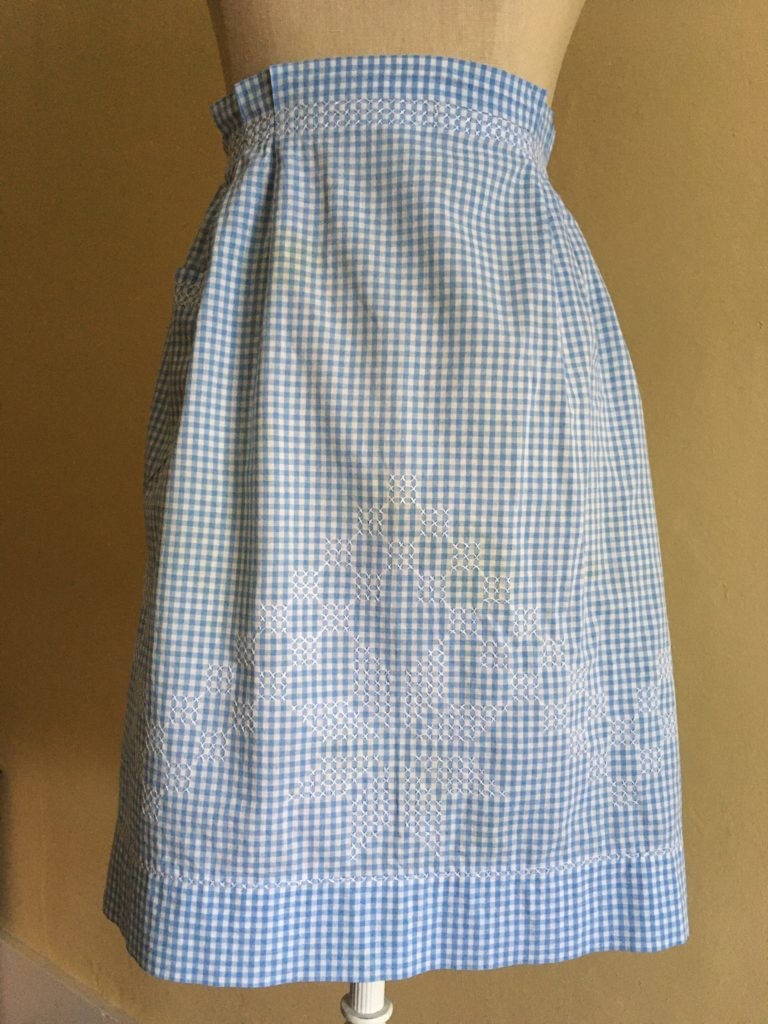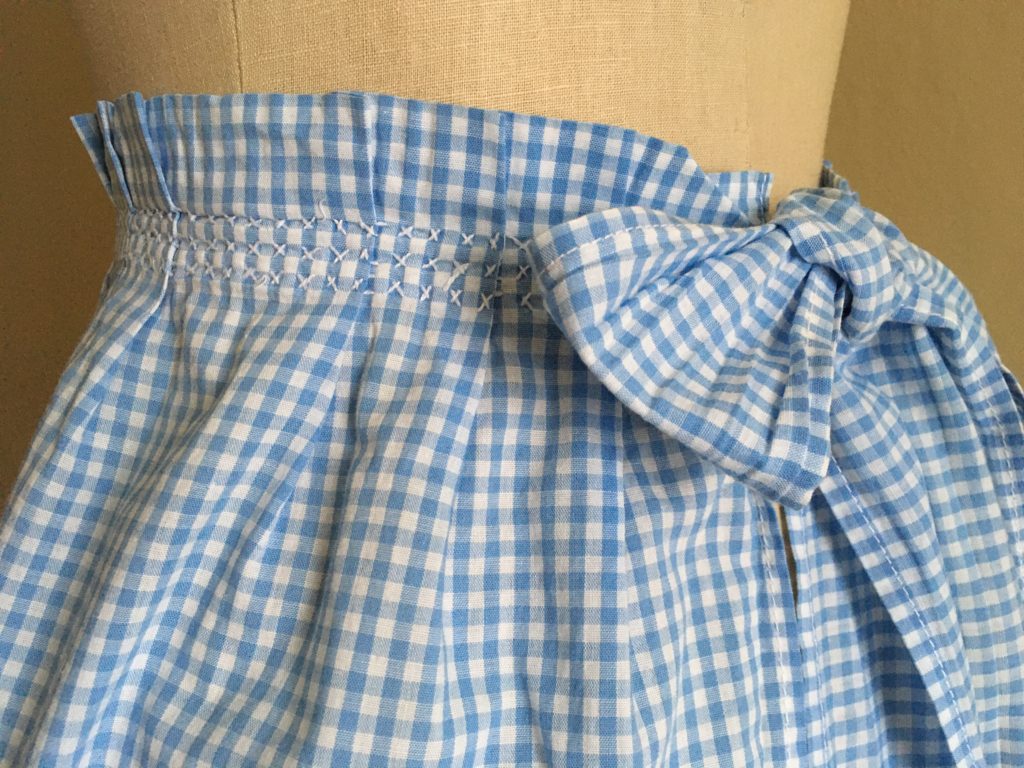As someone who wears an apron every day, I have long appreciated their usefulness. I prefer a full apron with plenty of coverage to keep food splatters and dish water off my clothes – and I find myself accidently wiping my hands on my clothes if I’m in the kitchen without one.
According to my mother I come from a long line of apron-wearing women. She remembers her grandmother Emily Strutz Jentz (1873-1958) wearing aprons for gardening, for cleaning, and most memorably for baking. Grandma Jentz made bread, pies and coffee cake every week, but it was her homemade doughnuts that my mother loved best. My mother also remembers the embarrassment of accidently wearing an apron to school and the teasing that ensued! My mother and her sister had to wear aprons at breakfast to protect their dresses, and rushing off to school one day my mother forgot to take hers off. When she got to school and took off her coat, she was ridiculed by the other 4th graders for her fashion faux pas.
This is one of many aprons in the family collection – the stains on the front prove that it was well used. It’s made from blue gingham fabric with white embroidery floss cross stitch. This kind of embroidery was popular from the 1930s to the 1960s – reaching its heyday in the late 1950s. Sometimes called Amish embroidery or Chicken Scratch, the cross stitches form both the pattern and the shaping – holding up the hem and creating the pleats in the waistband. Similar vintage aprons can be found online which use the same star pattern. Each maker adapted the pattern to her liking, but the similarity shows that this star pattern was widely available.
Resource: Aprons: Icons of the American Home by Joyce Cheney



Thanks for including my story. I have more old aprons. Shall I send them?
Sure!